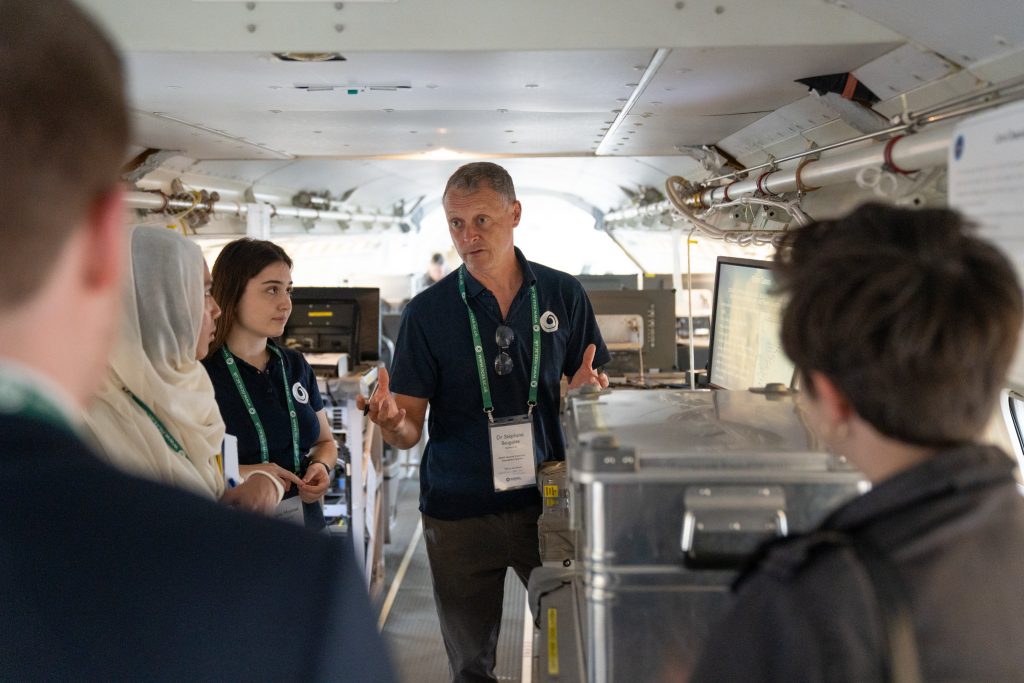The FAAM Airborne Laboratory research aircraft is used to measure chemicals in the atmosphere. Through the Mid-Life Upgrade, a programme of work set to maximise performance and extend operation to 2040, we are boosting our aircraft’s atmospheric chemistry capabilities.
What instruments are we adding?
First on the list of instrumentation updates are several brand new high-specification spectrometers. Spectrometers measure the composition of various substances, and in atmospheric chemistry they are used to determine what and how many chemicals are present in parts of our atmosphere.
Our new spectrometers will be able to measure greenhouse gases and air pollutants, in minute quantities and in real-time. This means users of the airborne facility will be able to quickly and precisely geo-locate measurements. The more accurately we can geo-locate our measurements in space and time, the more useful they are to researchers.
We will also be adding the capability to monitor molecular hydrogen. Fast and accurate airborne hydrogen sensing is becoming a priority, as hydrogen fuel is explored as a fossil fuel alternative for energy.
Not all instruments need to be developed from scratch. We are scoping out various commercially-available ultraviolet and infrared spectrometers, to see if they would be suitable for installation on an airborne platform. Airborne atmospheric measuring equipment needs to be compact, light, and power-efficient.
It is also important to consider how easily serviced and maintained these instruments will be, as well as how they could be customised to perform better while installed on an aircraft. In particular, any instruments we install need to be able to cope with fast changing water vapour which can interfere with spectrometers. The FAAM Airborne Laboratory research aircraft often flies in conditions with a lot of water vapour present, especially when studying clouds or flying at low altitudes over the ocean in the tropics.
How and why are we upgrading the aircraft infrastructure to support the new atmospheric chemistry instrumentation?
Upgrading the atmospheric chemistry instrumentation means we also need to develop the surrounding infrastructure that supports it. We are improving the in-flight calibration systems to compare FAAM’s measurements to international reference scales.
Chemistry Specialist at the FAAM Airborne Laboratory, Dr Stéphane Bauguitte, explains the importance of this: “FAAM airborne measurements can be compared to measurements made by ground-based observatories world-wide, and be used by climate modellers with confidence. FAAM measurements are also used by the satellite community for validating their measurements.”

We sample air for analysis through specialised inlets and we are upgrading these inlets to ensure they take in air at the correct flow rates more consistently. Air properties change at different altitudes and as we operate anywhere from 15m above sea level all the way up to 10.5km the inlets need to be able to perform consistently at any height and speed.
We are also developing our data acquisition methods, and control hardware and software to make sure all the data we collect are logged and timestamped accurately.
What atmospheric chemistry capabilities are we considering for the future?
One new feature we are exploring is enabling remote control of chemistry instruments on the aircraft from the ground. This would use satellite communication technology, which is being developed by the Mid-Life Upgrade team, similar to what is currently used to operate equipment on space missions.
Remote control via satellite communication technology, also known as SATCOM, would also offer a more sustainable solution for the facility. With SATCOM-controlled instruments, fewer specialist crew would be needed on the aircraft during missions – freeing up space and weight for more scientific instruments.
